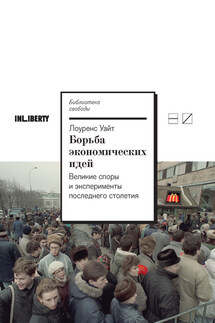The General Theory of Capital: Self-Reproduction of Humans Through Increasing Meanings - страница 75
Why did traditional culture-society reproduce itself in a simple way, why did its complexity and productivity increase so slowly? There were several reasons for this:
● Low sociality / isolation of communities, limited communication outside a narrow circle of acquaintances and relatives;
● Monotony of cultural and individual experience, low specialization of both activity and active power under subsistence farming and personal dependence;
● Rigidity of order that prevented the growth of personality, its complexity, learning and creativity;
● Inertia of traditional choice and socio-cultural norms and values that limited rationality and choice between counterfacts.
By nature, simple self-reproduction is the way small communities reproduce themselves under subsistence farming and personal dependence. In these small communities, consumption is reduced to the satisfaction of the simplest needs of existence and communication, production is small-scale and artisanal, circulation is limited mainly to gifts, tributes and local trade. Almost all social relations here boil down to communication with familiar people:
“The kind of exchange that has characterized most of economic history has been personalized exchange involving small-scale production and local trade. Repeat dealing, cultural homogeneity (that is a common set of values), and a lack of third-party enforcement (and indeed little need for it) have been typical conditions. Under them transactions costs are low, but because specialization and division of labor is rudimentary, transformation costs are high. The economies or collections of trading partners in this kind of exchange tend to be small” (North 1990, p. 34).
The merging of communities into chiefdoms and states did not change their local and inert character. Nor could the traditional order rooted in the community be overcome at the imperial level. Robert Lopez lists some of the obstacles that prevented the ancient Roman economy from going beyond the limits of simple self-reproduction. In our opinion, this list can be applied to all traditional states:
● Total or partial state monopoly on the production and circulation of salt, grains, metals, marble, etc.;
● Restrictions on foreign trade, total prohibition on the export of gold, strategic materials, foodstuffs;
● Lack of demand for foreign goods due to almost total self-sufficiency;
● Weak internal trade due to the unification of production and consumption;
● “The most serious obstacle to commercial development, however, was a psychological one. Trade was regarded as a base occupation, unworthy of gentlemen though not really unbecoming for commoners who would be unable to find a more dignified means of support” (Lopez 1976, pp. 7-8).
To overcome simple self-reproduction as a whole, what was needed was not the mere growth of the agricultural surplus in its natural form of corvée or rent-in-kind. The surplus had to take the form of exchange value/money so that it could be accumulated—saved and invested—and thus used not to increase consumption but production. Surplus activity had to be recast into surplus value and surplus value into capital. Capital, the complex types and means of activity in which it appears, could not be created only in agriculture; it required the advance of trade and crafts:
“Without capital, and hence with modest tools, a craftsman soon reached the ceiling of the production he could achieve single-handedly. This in turn tended to create a closed circle: he produced little surplus because he lacked labor-saving devices and money to hire many assistants, and could not buy the devices or hire the assistants because he produced little surplus. No doubt the circle could be broken if he found somebody willing to lend him capital; but the low return of the investment made it impossible for him to obtain credit at reasonable terms” (Lopez 1976, p. 9).







